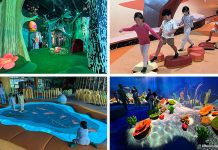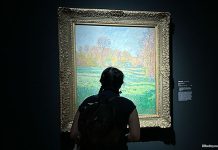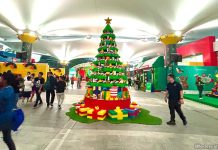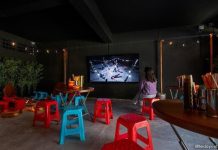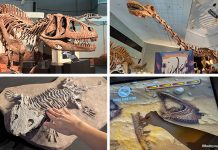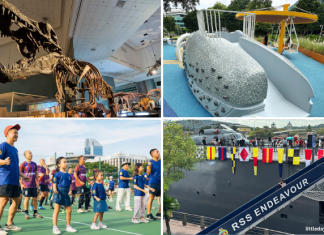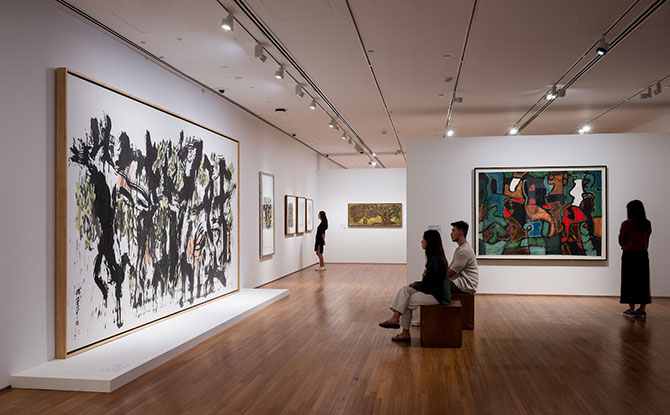
National Gallery Singapore is home to a collection of over 9,000 art works from Singapore and around the region. In addition to having the world’s largest collection of Singapore and Southeast Asian modern art, the museum is also the custodian of Singapore National Collection and an attraction that every art-lover should visit. The art gallery also has a special exhibition area that caters to families with young children.
Housed within two former civic buildings at the heart of the Civic District, in front of the historic Padang, the National Gallery Singapore has a voluminous floor area of 64,000 square metres. This makes it the largest museum in Singapore.
New Exhibition at National Gallery Singapore: Becoming Lim Tze Peng (25 Oct 2024 to 23 March 2025)
Trace the artistic evolution of 103-year-old Singaporean artist Lim Tze Peng at Becoming Lim Tze Peng, National Gallery Singapore’s first solo exhibition dedicated to the nation’s oldest living and active artist.
CARNIVAL OF CHRISTMAS CHEER: Celebrate and Win at Plantation Plaza and Northshore Plaza!
SNOW MUCH TO CELEBRATE: Christmas Fun at The Centrepoint
The bilingual exhibition features over 50 artworks specially selected from Singapore’s public art collection, including an artwork of the Singapore River from The Istana’s collection, as well as from the artist’s personal collection.
The exhibition traces the centenarian artist’s lifelong journey and dedication to his craft.k On display are sketches, calligraphy, and paintings in ink, watercolour, and oil genres, dating back to his early artist days in 1946 to a recently completed work from 2023.
From 25 October 2024 to 23 March 2025, visitors can explore a dynamic collection of Lim’s artworks. Marvel at nostalgic depictions of well-loved scenes of everyday Singapore, immerse yourself in magnificent landscapes drawn from his art expeditions across Southeast Asia and beyond, and experience Lim’s bold and expressive ink works, including his distinct style of calligraphy, “hu tu zi” (糊涂字).
Vibrant, everyday scenes of Singapore were Lim’s favourite subjects. These include familiar local scenes such as the Singapore River, Sultan Mosque, coffee shops, and wet markets. This section offers visitors a glimpse into the landscapes of heritage Singapore from Dàpō to Xiǎopō (‘Big Quay’ to ‘Little Quay’) – colloquial terms popular amongst the older Chinese-speaking communities which refer to the area from present-day Outram Park to Kampong Glam.
Beyond Singapore’s everyday life and scenes, Lim Tze Peng also drew inspiration from his artistic expeditions with his artist friends from different art groups. These pursuits are represented in these second section of the exhibition.
The third theme and section of the exhibition explores Lim’s pursuit of artistic freedom and the creation of his own artistic rules, which are grounded in his aesthetic sensibility and creative methods.
Artist Mr Lim Tze Peng says, “I would like to thank National Gallery Singapore for the opportunity to showcase my work at the state level and their efforts to champion art from Singapore. Creating art has been my lifelong passion, and I have devoted myself to it wholeheartedly. I am very excited to see a variety of my artworks from nearly 80 years displayed in this exhibition. I hope that visitors will connect with these pieces on a deeper level as they appreciate my art.”
Definitive Guide To National Gallery Singapore: What To See & Do At Singapore’s Largest Museum
The sheer size of the art museum may seem a bit overwhelming and first timers may have trouble deciding how to navigate National Gallery Singapore.
Therefore, we have come up with this definitive guide to National Gallery Singapore to help you figure out where to start, what artworks to look for and how you maximise your time visiting the attraction.
National Gallery Singapore Guide: Overview & What to See and Do
Orientation and Overview
The National Gallery Singapore is made up of two wings, the former City Hall building and the former Supreme Court building.
Looking at the building from the front, the former City Hall is on the right and the former Supreme Court building is the one with the dome on the left.
The two wings are connected by the Padang Atrium and two link bridges. The Lower Link Bridge connects the 3rd floors of the two wings together and the Upper Link Bridge connects the wings’ 4th floors.
City Hall Wing: Singapore Art
Broadly speaking, the City Hall wing houses Singapore-focused art. These are presented across three galleries, the DBS Singapore Gallery 1, 2 and 3. The three galleries are all located on Level 2 of the City Hall Wing.
The Keppel Centre for Art Education, a specially curated section for children, is located on Level 1 of the City Hall Wing.
Basement 1 and Level 3 of the City Hall Wing have galleries that house special exhibitions.
- At Basement 1, there is The Ngee Ann Kongsi Concourse Gallery;
- Level 3 has the Singtel Special Exhibition Galleries 1 to 3;
- Level 4 has the Level 4 Gallery and Wu Guanzhong Gallery;
On Level 4, you will find the ArchiGalleries 1 and 2, dedicated to the histories of the two buildings that make up National Gallery Singapore.
Go up to Level 5 of the City Hall Wing to reach the Ng Teng Fong Roof Gallery, where you can access Level 6, the Padang and Coleman Decks that overlook the padang.
Supreme Court Wing: Southeast Asian Art
The Supreme Court Wing houses the National Gallery Singapore’s Southeast Asian art collection. This extensive collection is spread over three floors from Level 3 to Level 5 and 14 galleries.
In addition, the basement of the Supreme Court Wing also has two galleries that house temporary exhibits:
- The Imagination Gallery; and
- Koh Seow Chuan Concourse Gallery.
Another interesting exhibition at the third level of Supreme Court wing is Law of the Land, which showcases important documents from Singapore’s history including Singapore’s independence proclamation document. As at April 2024, the exhibition is undergoing a refresh.
Suggested Route to Explore National Gallery Singapore
After having made countless visits to National Gallery Singapore ourselves, here is our suggested route if you wish to view the artworks in the Gallery’s collection.
- Start at the City Hall Wing. Go up to Level 2 to view the DBS Singapore Galleries 1 to 3.
- Make your way up to Level 3. If there are any special exhibitions ongoing, you can view them at the Singapore Singtel Exhibition Galleries. If not, take the Lower Link Bridge to cross over to the Supreme Court Wing Level 3.
- View the Southeast Asian Art on display at the UOB Southeast Asia Galleries. The galleries are intended to be viewed sequentially. At Level 3, you can visit Galleries 1 to 10, then head up to Level 4 for Gallery 11 and end off your exploration of Southeast Asia art at Galleries 12 to 14 on Level 5.
- Exit the UOB Southeast Asia galleries at Level 5 and take the Upper Link Bridge back across to Level 4 of the City Hall Wing. Here, you can visit the ArchiGallery 1 and 2 and the Wu Guanzhong Gallery (if there is any special exhibition ongoing).
- Finally, make your way up to the Ng Teng Fong Roof Garden Gallery on Level 5 of the City Hall Wing. Take the stairs to the Padang and Coleman Deck on Level 6 for a view of the city skyline to end your National Gallery Singapore visit.
What’s at Each Gallery at National Gallery Singapore
Singapore Art at City Hall Wing: Siapa Nama Kamu? Art in Singapore Since the 19th Century
At the City Hall Wing, you will find Singapore-related art under the theme of Siapa Nama Kamu? Art in Singapore Since the 19th Century.
Take note that from 8 April 2024, National Gallery Singapore’s DBS Singapore Gallery will be undergoing a phased revamp of its inaugural exhibition to present a new, bigger and bolder exhibition in 2025. The revamp of the three galleries will be conducted in phases, beginning with Gallery 1. At least one of the three DBS Singapore Galleries available for members of the public to visit at all times.
This is the National Gallery Singapore’s first revamp of its long-term exhibitions since opening in 2015. This revamp builds on the DBS Singapore Gallery’s long-term vision to enable more Singaporeans and visitors to learn and appreciate stories of Singapore through art. With the revamp, the Singapore Galleries will highlight lesser-known yet equally compelling stories of artists and their endeavours that mark pivotal moments and raise critical questions about narratives of Singapore’s art history.
DBS Singapore Gallery 1 (Level 2, City Hall Wing)
The DBS Singapore Gallery 1 is a good place to start a visit to National Gallery Singapore.
Gallery 1 focuses on early Singapore art and artworks by famous local artists such as Liu Kang and Georgette Chan from the Nanyang school.
Immediately to the left upon entering Gallery 1 are a series of sketches from the William Farquhar Collection of Natural History Drawings. These are early watercolour drawings of plants and animals, representing some of the earliest efforts to capture the local environment.
As you make your way into Gallery 1, you will find works introducing the Nanyang School. This reflects the belief of Lim Hak Tai, founder of the Nanyang Academy of Fine Arts, that “art should have a sense of localness”.
Here, you can admire the work of artists such as Georgette Chen who imbued their art works with a sense of local identity.
Next in the DBS Singapore Gallery 1 is the Liu Kang Gallery. This pays tribute to the work of seminal local artist Liu Kang and also celebrates the landmark 1952 Bali trip undertaken by Liu Kang, Chen Chong Swee, Chen Wen Hsi, and Cheong Soo Pieng.
DBS Singapore Gallery 2 (Level 2, City Hall Wing)
At the entrance of Gallery 2 stands a statue of Chua Mia Tee, the painter of the Gallery’s star exhibit, National Language Class (1959).
This second gallery of Singapore-focused art reflects the themes of nationalism and independence in the tumultuous 1950s, as Singapore moved towards self-governance.
The art in the gallery also reflect developments in realism in China, Russia and Europe. Art grew to reflect everyday life, capturing scenes from an emerging nation.
DBS Singapore Gallery 3 (Level 2, City Hall Wing)
The third of the galleries focused on Singapore artist wades into the 1980s and 1990s which saw the emergence of performance art, scavenged materials and site-specific installations.
This included the formation of avant-garde collectives that operated at the fringes of mainstream art institutions, challenging the interpretation of art.
Singapore artists also expanded beyond local shores and started to exhibition at international platforms.
Take note that Gallery 3 contains contemporary and mixed media artworks that includes works with nudity.
UOB Southeast Asia Galleries: Between Declarations & Dreams: Art of Southeast Asia Since the 19th Century
The exhibition at the UOB Southeast Asia Galleries is entitled Between Declarations & Dreams: Art of Southeast Asia Since the 19th Century. It provides a narrative that examines the the role of modern art from national perspectives and seeks to extend this across geo-political boundaries.
The collection showcases the works of artists from Southeast Asian countries such as Indonesia and the Philippines.
The works at Between Declarations & Dreams: Art of Southeast Asia Since the 19th Century are presented chronologically from the 19th century to the 1990s. They are also grouped together by various themes.
UOB Southeast Asia Galleries 1 to 2: Authority & Anxiety 19th – early 20th Century (Level 3, Supreme Court Wing)
The first section of Between Declarations & Dreams examines early museum collections in Southeast Asia in Gallery 1. This then progresses on to the tension with colonialism in Gallery 2.
A key work here is Boschbrand by Indonesian artist Raden Saleh in Gallery 2.
UOB Southeast Asia Galleries 3 to 5: Imagining Country & Self (Level 3, Supreme Court Wing)
Moving into Galleries 3 to 5, you will be able to see how artists started to capture and portray their home countries.
With a growing sense of nationalism, local artists started to express a deeper connection to their homelands in their works. This was manifested by artists showing a heightened sensitivity of place.
UOB Southeast Asia Galleries 6 to 10: Manifesting the Nation 1950s – 1970s (Level 3, Supreme Court Wing)
Political awakening is the main theme of galleries 6 to 10 and artists responded to the themes of nation-building in different ways. Artists also played a role in documenting political events and issues as well as responding to awakened feelings of nationalism.
Some of the works here include Nguyen Gia Tri’s Landscape of Vietnam (Gallery 5) and Latif Mohidin’s Pagodas II (Gallery 8).
UOB Southeast Asia Galleries 11 to 14: Re:defining Art 1970s and After (Level 4 & 5, Supreme Court Wing)
As Southeast Asia art comes of age, it expands and pushes the boundaries from the 1970s and beyond. This movement is represented by the art works in Galleries 11 to 14.
You can also down the Gallery Explorer app (available for free on Apple App Store and Google Play Store) to your mobile device to learn more about individual artworks.
Changing Exhibitions
SingTel Special Exhibition Gallery (Level 3, City Hall Wing) & Others
Throughout the year, National Gallery Singapore also hosts changing exhibitions for visitors to explore and appreciate. These are held at various other exhibition spaces found around the museum. There are special exhibition galleries located in the basement, concourse, 4th floor and even the rooftop.
Past blockbuster exhibitions that have been held at National Gallery Singapore include Colours of Impressionism: Masterpieces from the Musée d’Orsay and Between Worlds: Raden Saleh and Juan Luna.
Marquee Events
The National Gallery Singapore also organises large scale events. Two of the best known ones are:
Architectural Highlights at National Gallery Singapore
The two historic buildings that make up the National Gallery Singapore hold various architectural highlights that may intrigue visitors.
A good place to learn more about the history of the buildings is at the ArchiGalleries 1 & 2 at the fourth floor of the City Hall Wing.
The City Hall and former Supreme Court buildings were completed in 1929 and 1939 respectively. The two buildings are designed in the neoclassical style and were designed to represent the power of the British colonial government.
The buildings have been the location of many significant events over the years. Amongst the key milestones that City Hall has borne witness to include the Japanese surrender ceremony in 1945, the inauguration of Yusof bin Ishak as Yang-di-Pertuan Negara (Head of State) in 1959, the announcement of Singapore’s merger with the Federation of Malaya in 1963 and Singapore’s Proclamation of Independence in 1965.
In light of their architectural and historical significance, both City Hall and the former Supreme Court were gazetted as national monuments on 14 February 1992.
Between the two ArchiGalleries, you will find Resident Frequencies, a sound work that responds to the historical, social and spatial memories of the buildings. There are also interactive panels.
In addition, as you walk around National Gallery Singapore, look out for building highlights such as the City Hall Chamber (Level 2, City Hall Wing), the Rotunda Library (Level 3, Supreme Court Wing), Chief Justice’s Chambers (Level 3, Supreme Court Wing) and the Holding Cells (Level 1, Supreme Court Wing).
You can also get a close up look at the Rotunda Dome that caps the library that surrounded Supreme Court’s four original courtrooms.
Keppel Centre for Art Education
Families with young children may wish to pay a visit to the Keppel Centre for Art Education at Level 1, City Hall Wing, where there are activities for kids. The Centre is one of our picks for the most kid-friendly museums in Singapore.
The Keppel Centre for Art Education is made up of several smaller galleries and space. Learn more about what’s on at the Keppel Centre for Art Education.
National Gallery Singapore Food and Shops
In addition to art, National Gallery Singapore also has quite a collection of restaurants. These include the modern French restaurant Odette and local cuisine represented by National Kitchen by Violet Oon Singapore.
Other options include Hachi Restaurant, an omakase Japanese restaurant and Yan, a Cantonese restaurant.
The above restaurants fit within the higher range price bracket. If you are looking for something more casual, there are two many options that you may wish to consider for food within National Gallery Singapore.
Courtyard Cafe specialises in Straits Asian food. It also serves local coffee and traditional kuehs and cakes. You can expect a main dish to range between $13 to $20 plus.
Another spot is The Great Mischief, which has tapas, pastas and sandwiches. The mains here will set you back around $20+.
Of course, if you don’t wish to dine at National Gallery Singapore, you can find other food options a short walk away at Funan.
If you wish to take a souvenir home from National Gallery Singapore, shop at The Gallery Store by Arby, located at the City Hall Wing Level 1, Coleman Street Entrance.
Tickets for National Gallery Singapore
National Gallery Singapore tickets can be purchased from a kiosk.
Even though it is free for locals, Singaporeans and PRs will still need to scan their identity cards at the kiosk to get a ticket sticker.
Here are the ticket admission prices.
| TICKET TYPE | STANDARD | LOCAL | |
| General Admission + Free Guided Tours |
$20 | FREE | |
| Special Exhibition | $25 | $15 | |
| All Access Pass General Admission + Special Exhibition |
$30 | For Singaporean and PR, purchasing a ‘Special Exhibition’ pass automatically upgrades you to an ‘All Access’ pass, granting entry to all galleries. |
There are various concession and groups that enjoy free admission. Get all the details on National Gallery Singapore admissions.
How to Behave in the Galleries
As obvious as it may sound, do not touch the artworks on display. The works of art are a shared heritage for all to enjoy. To do so may result in damage to the artworks. Children should be supervised while in the galleries.
Bear in mind not to go across the black line on the floor in front of each exhibit.
In the same vein, no food and drink are allowed within the galleries.
Flash photography and videography is also not permitted within the galleries.
Getting to National Gallery Singapore
For those who are driving, the entrance to the car park is via St Andrew’s Road. There are two levels of basement parking at the building.
For those who are taking MRT, the closest MRT station is City Hall.
National Gallery Singapore Operating Hours and Address
Address: 1 St. Andrew’s Road, Singapore 178957
Open daily from 10am to 7pm.
Visit the National Gallery Singapore website.


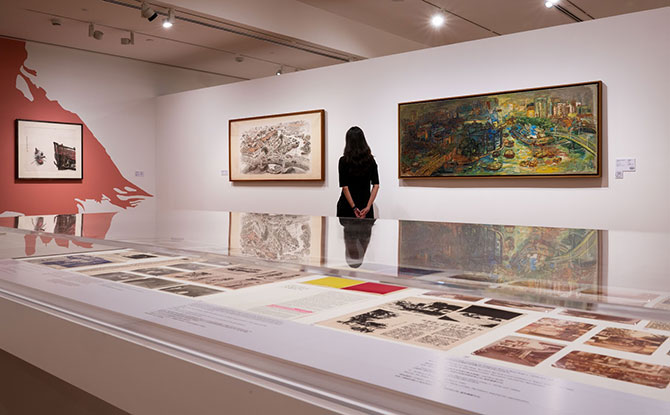
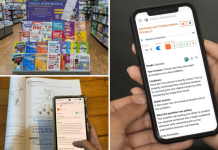
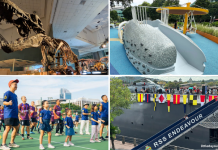

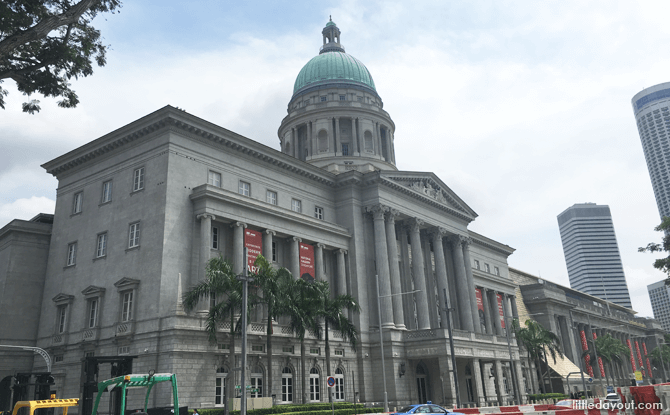
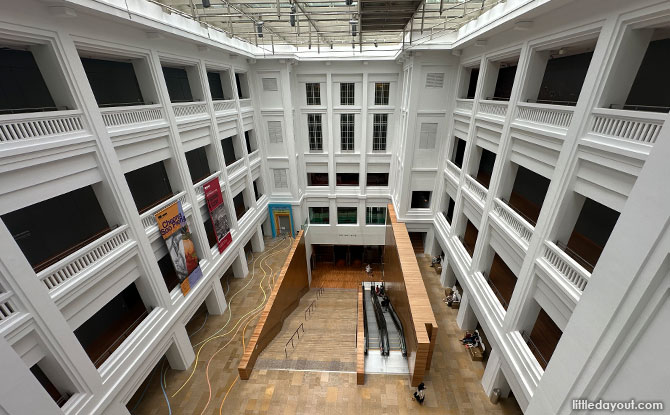
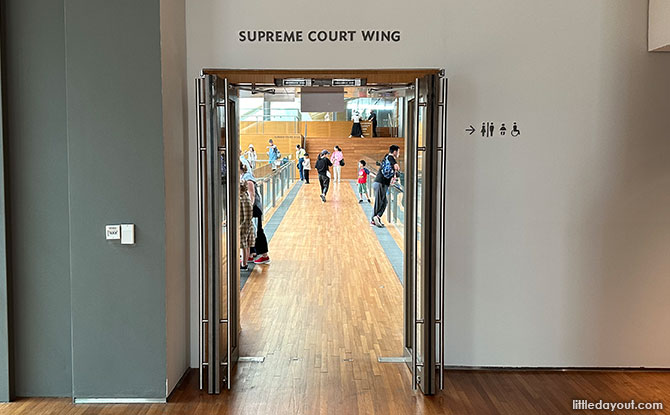
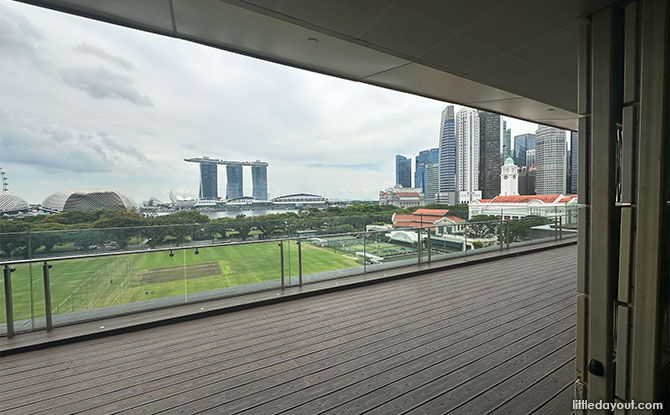
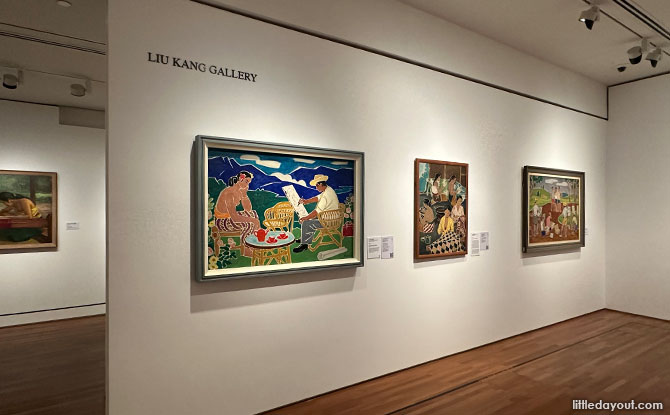
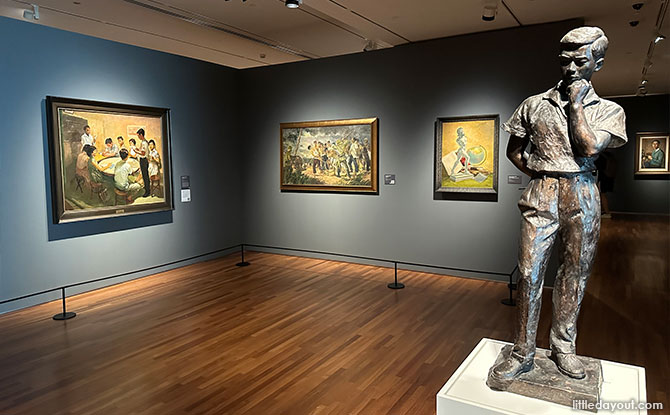
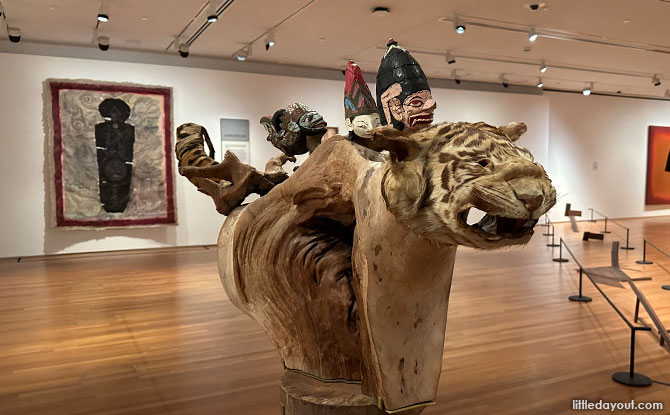
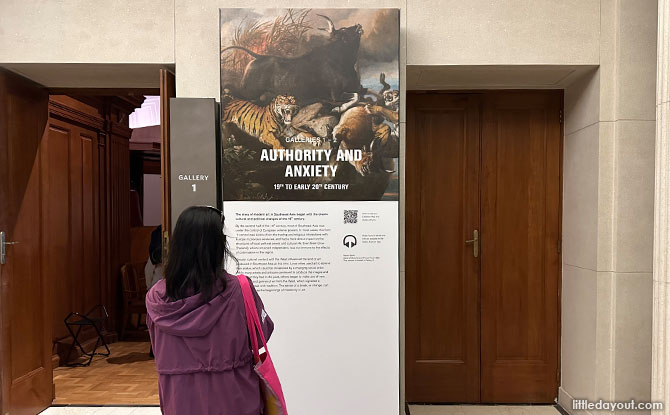
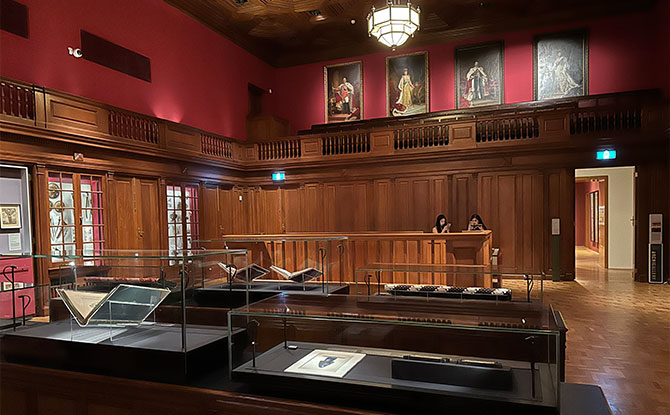
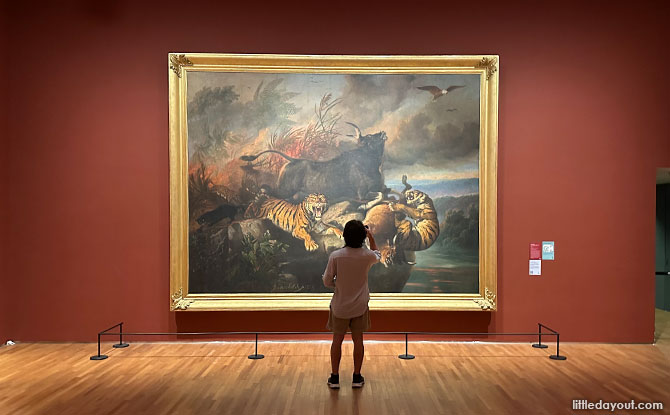
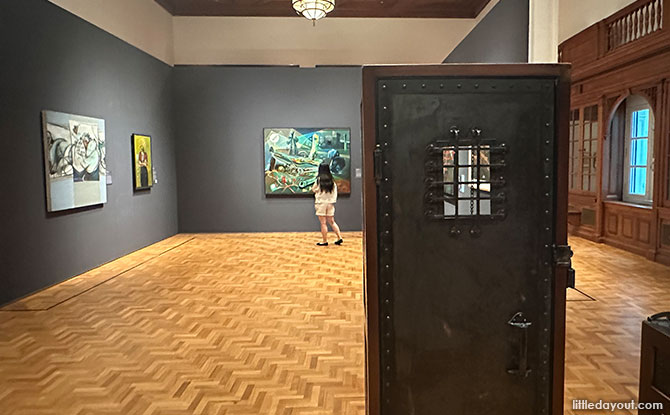
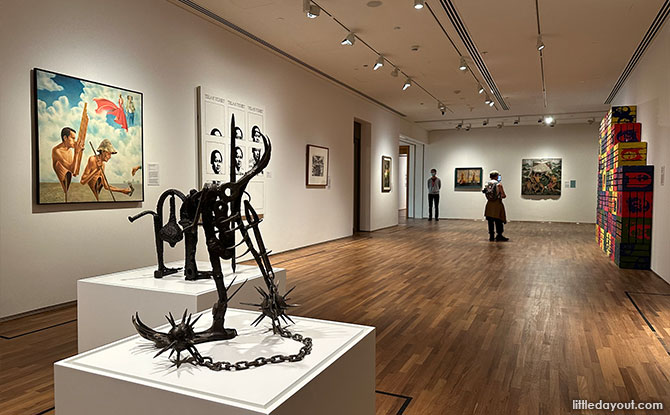
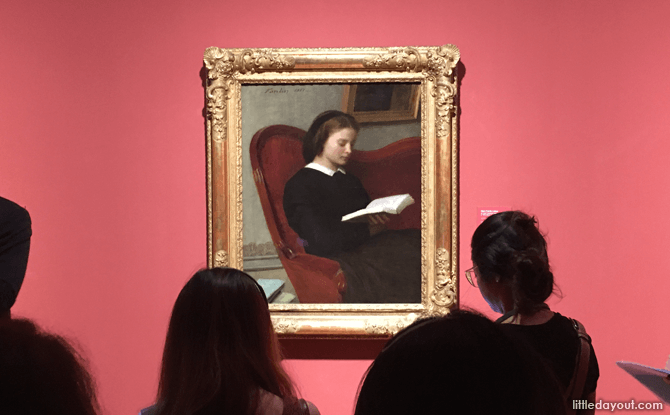
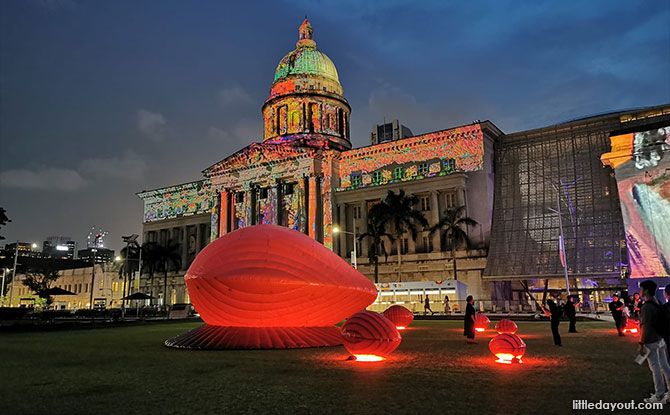
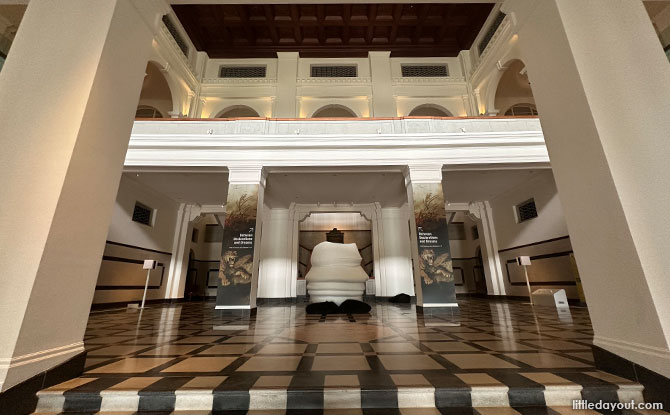
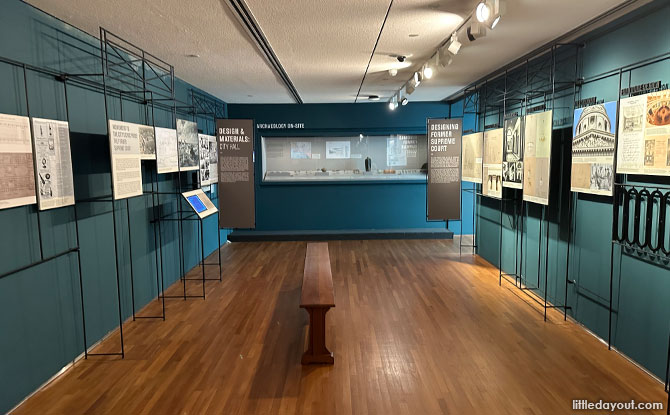
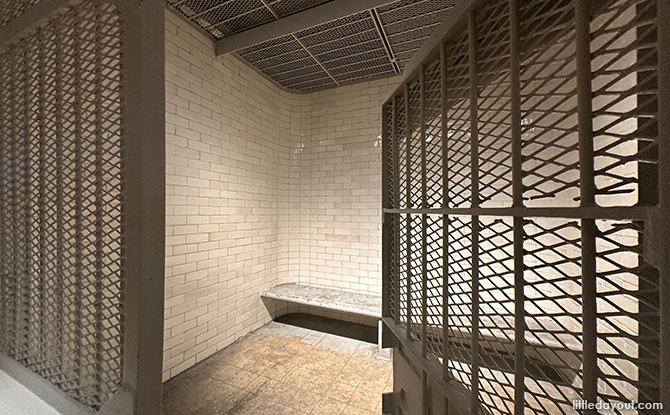
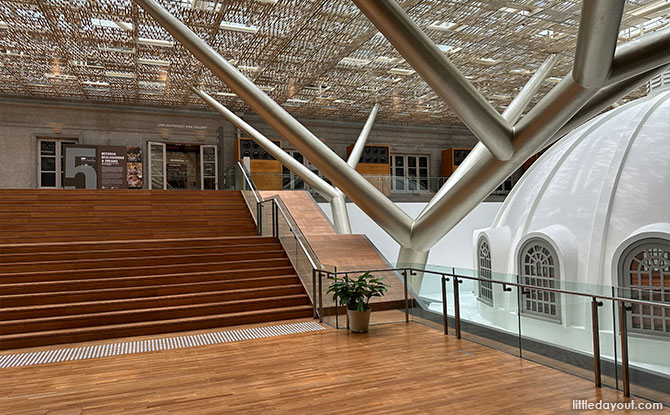
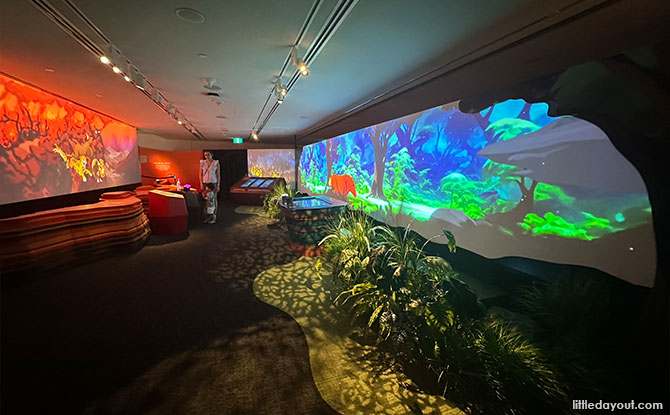
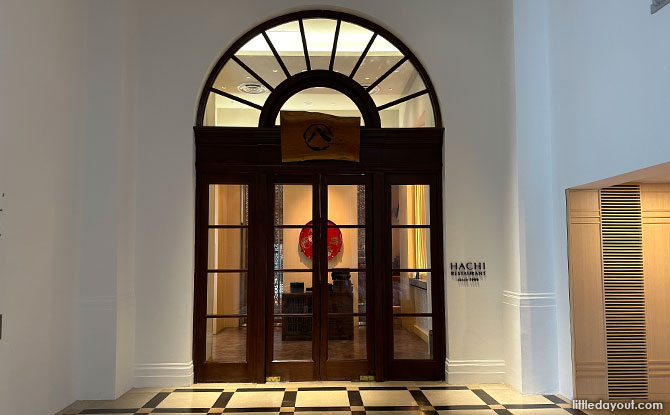
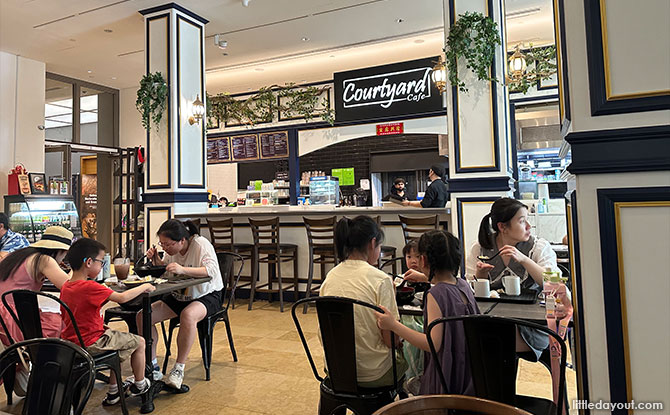
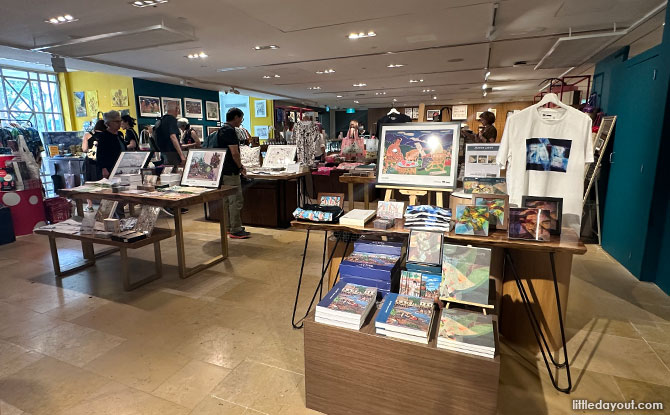
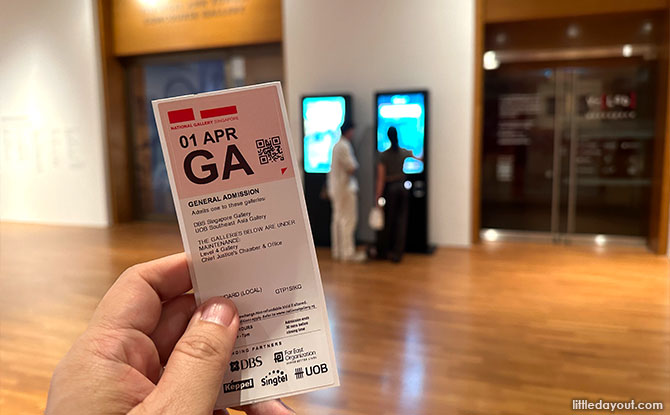


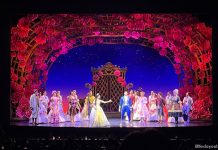
![Amazing Guide To Singapore Botanic Gardens: Things To See & Do At The UNESCO World Heritage Site [Updated 2025] A Guide to Singapore Botanic Gardens: Things To See & Do At The UNESCO World Heritage Site & More](https://www.littledayout.com/wp-content/uploads/singapore-botanic-gardens-guide-218x150.jpg)

![Ultimate Guide To Science Centre Singapore: Fun Explorations & Learning [Updated 2025] Ultimate Guide To Science Centre Singapore: Fun Explorations & Learning](https://www.littledayout.com/wp-content/uploads/Science-Centre-Singapore-37-218x150.jpg)
